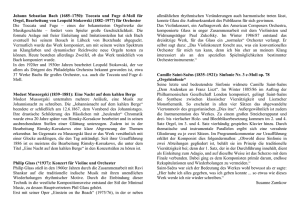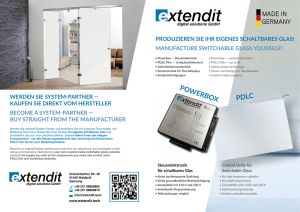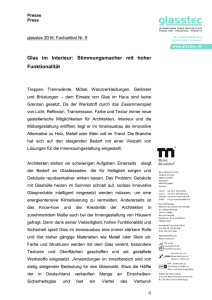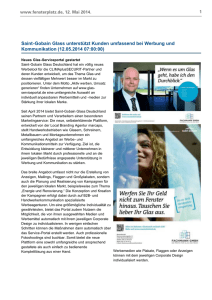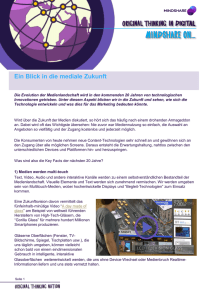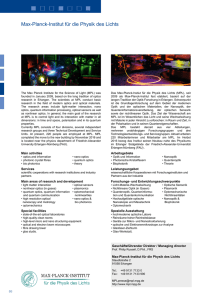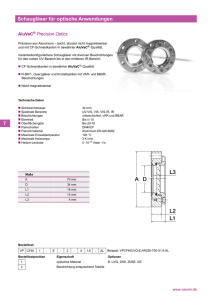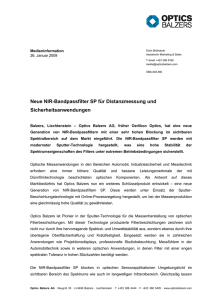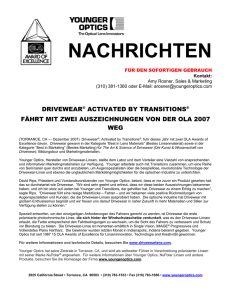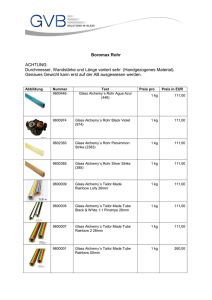WaferLevelOptics
Werbung
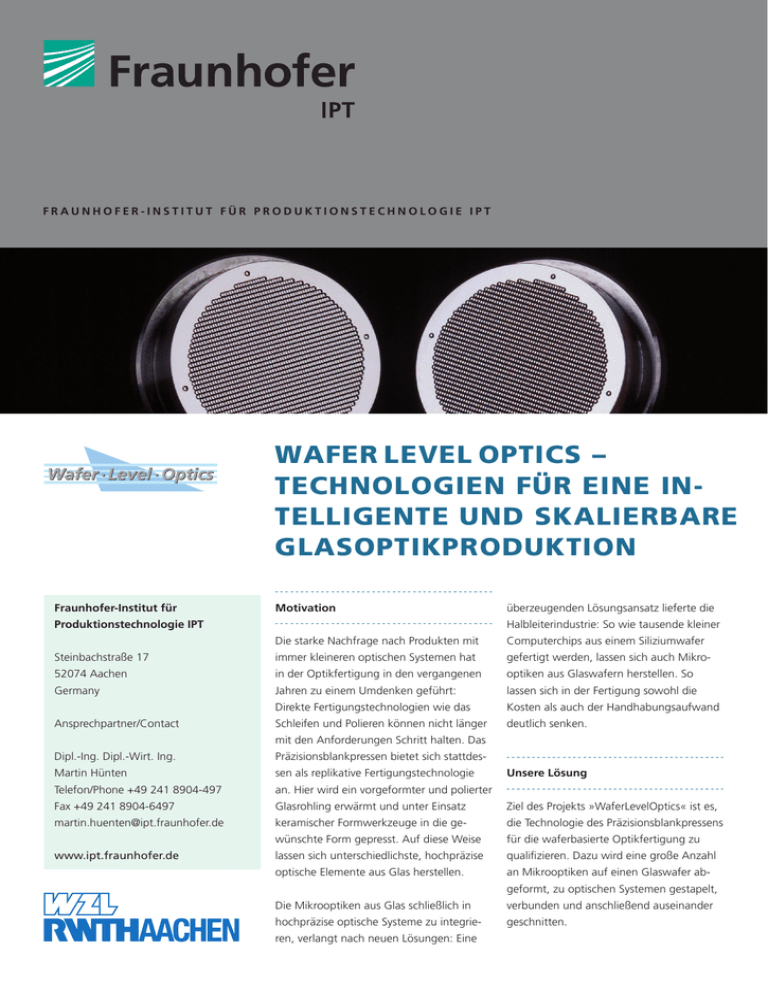
F R A U N H O F E R - I N S T I T U T F Ü R P ro d u k tionste c hno l o g ie I P T 1 2 Wafer Level Optics – Technologien für eine intelligente und skalierbare Glasoptikproduktion Fraunhofer-Institut für Motivation Produktionstechnologie IPT überzeugenden Lösungsansatz lieferte die Halbleiterindustrie: So wie tausende kleiner Die starke Nachfrage nach Produkten mit Computerchips aus einem Siliziumwafer Steinbachstraße 17 immer kleineren optischen Systemen hat gefertigt werden, lassen sich auch Mikro- 52074 Aachen in der Optikfertigung in den vergangenen optiken aus Glaswafern herstellen. So Germany Jahren zu einem Umdenken geführt: lassen sich in der Fertigung sowohl die Direkte Fertigungstechnologien wie das Kosten als auch der Handhabungsaufwand Schleifen und Polieren können nicht länger deutlich senken. Ansprechpartner/Contact mit den Anforderungen Schritt halten. Das Dipl.-Ing. Dipl.-Wirt. Ing. Präzisionsblankpressen bietet sich stattdes- Martin Hünten sen als replikative Fertigungstechnologie Telefon/Phone +49 241 8904-497 an. Hier wird ein vorgeformter und polierter Fax +49 241 8904-6497 Glasrohling erwärmt und unter Einsatz Ziel des Projekts »WaferLevelOptics« ist es, [email protected] keramischer Formwerkzeuge in die ge- die Technologie des Präzisionsblankpressens wünschte Form gepresst. Auf diese Weise für die waferbasierte Optikfertigung zu lassen sich unterschiedlichste, hochpräzise qualifizieren. Dazu wird eine große Anzahl optische Elemente aus Glas herstellen. an Mikrooptiken auf einen Glaswafer ab- www.ipt.fraunhofer.de Unsere Lösung geformt, zu optischen Systemen gestapelt, Die Mikrooptiken aus Glas schließlich in verbunden und anschließend auseinander hochpräzise optische Systeme zu integrie- geschnitten. ren, verlangt nach neuen Lösungen: Eine Stack of diced lenses Molded glass wafers Packed optical systems In der Herstellung von Kunststoffoptiken ist Aus diesem Grund hat sich ein europäi- factured on wafers up to 150 mm long. die waferbasierte Fertigung bereits heute sches Konsortium von zehn internationalen The technology needed to replicate glass ein etabliertes Verfahren, mit dem sich Partnern aus sechs europäischen Ländern optics is far more complex than that used tausende kleiner Mikrooptiken auf bis zu zusammengefunden: Innerhalb von for polymer optics, so there is currently no 150 mm großen Wafern fertigen lassen. drei Jahren soll durch die intensive process for the wafer-based production of Die Technologien für die Replikation von Zusammenarbeit der Partner im Projekt glass micro optics. Glasoptiken sind jedoch deutlich komple- »WaferLevelOptics« eine vollständige xer, daher existiert bis heute noch keine Prozesskette zur erfolgreichen Fertigung A European consortium was therefore Prozesskette für waferbasierte Fertigung von Glasmikrooptiken auf Waferbasis established to implement the idea of wafer- von Mikrooptiken aus Glas. entstehen. based glass molding. Ten partners from six different European countries are working Technologies for intelligent and scalable glass optics manufacturing Motivation dustry is a leading example of how this can be done: the manufacture of thousands of Increasing demand for miniaturized computer chips from a single silicon wafer optical systems in ever-larger quantities has considerably lowered manufacturing are two issues that have led to a change costs and reduced the handling complexity. in glass optics manufacturing within the last decade. While direct manufacturing techniques such as grinding and polishing Our Solution no longer meet the requirements for microoptical components, the replicative process The aim of the WaferLevelOptics project is of precision glass molding has been devised to develop precision glass molding tech- to keep up with technical developments in niques for the replication of micro-optics optics design. Here, a glass blank is heated from glass wafers. The idea is to mold a and formed into a lens by ceramic molds. large number of micro-optics from one This technique can be used to produce a glass wafer, stack and link these into optical large variety of ultra precise glass optical systems before cut them apart. elements. Wafer-based manufacturing is already an The integration of micro optical lenses established process for polymer optics – into highly precise optical systems requires thousands of micro optics can be manu- innovative solutions. The semiconductor in- together to accomplish all the necessary developments to facilitate the efficient wafer-based manufacture of micro glass optics within three years.
